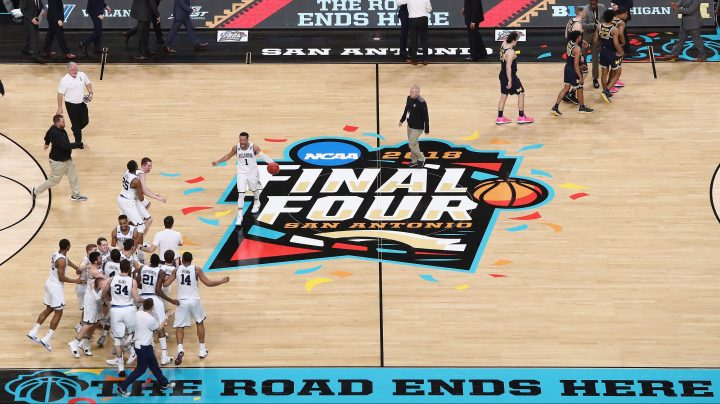
College stars’ name and image deals vs. the health of athletic departments
College stars’ name and image deals vs. the health of athletic departments

March Madness has finally arrived. From now through April 3, televisions across the country will be blasting college basketball all day long. But behind the buzzer beaters and shining moments for college athletes lie the murky waters of name, image and likeness rights.
Bruce Schoenfeld, book author and frequent contributor to The New York Times magazine, recently wrote about the effect of NIL deals on how athletic departments are funded. He joined “Marketplace” host Kai Ryssdal to talk about the future of funding college athletics and the problem confronting many athletic directors.
The following is an edited transcript of their conversation.
Kai Ryssdal: Let’s get the lay of the land here on name, image, likeness. What is the current state of play?
Bruce Schoenfeld: Flux. It’s a complicated situation because the current lack of restrictions were sort of thrust onto colleges with no warning. And then going on two years since, have basically been a real-time reaction to all of a sudden having your athletes be able to do in any extreme something they weren’t able to do at all before with no guardrails and no guidance.
Ryssdal: So who’s in charge? I mean, is there anybody keeping an eye on this?
Schoenfeld: I mean, you and I are keeping an eye on it. But it’s just people like us. Unfortunately, the only entities that really could regulate this are the NCAA, which in its infinite wisdom chose not to, and Congress, which is Congress.
Ryssdal: Enough said there. This is fundamentally an economic problem, right? Because while college sports are a multibazillion-dollar business, there are only so many bazillions of dollars and now the pies are having to be split. Talk about that a little bit.
Schoenfeld: You know, there are many unintended consequences to this. I think everybody felt that it was a good idea. The problem there is that unlimited amount of money that’s coming in is coming in from sponsors and boosters, who were already using it in ways that were helping to sustain all the rest of college sports. And now, that money is all going to the quarterbacks and the running backs and the point guards and the power forwards to the detriment of all the other sports that need it to survive.
Ryssdal: What happens then, to the rest of any given school’s maybe nonrevenue sports, but also, you know, second-tier kind of sports? I mean, are they not getting any money now?
Schoenfeld: Well, it remains to be seen what happens. The funding mechanism for those sports is through the athletic department. The athletic department gets its revenue from a handful of ways: television contracts, ticket sales and boosters. That money now — instead of going for the swimming pool — the best thing I could do and do on behalf of my university is to go get that prep quarterback. Now, putting aside for a moment that one of the few restrictions on this is you’re not supposed to be using it for recruiting, everyone’s doing that. And that is money that has to come from somewhere. And that was doing other work.
Ryssdal: It kind of sounds not sustainable, Bruce.
Schoenfeld: It isn’t sustainable. And that’s kind of one of the good things in that everybody in the ecosystem agrees that something has to change. The problem is there’s not a lot of agreement on how it should change. So we go back to the beginning. What’s the current state? It’s just in flux. It keeps changing week after week, based on new developments.
Ryssdal: So, for all the flux and the murkiness and the pain that’s coming from this, do you suppose this is a necessary step to get to the point where, No. 1, everybody recognizes that college sports — especially big-time college sports — are actually a business? And B, we figure out how to make it function as a business?
Schoenfeld: You know, a lot of athletic directors felt that the old system wasn’t working, and they were headed for an economic problem, even apart from the remuneration of athletes, that there needed to be changes. And maybe the answer long-term is that not every school will have every sport, that each school may have a couple of big-time sports and not much else. Or it may play out in completely different ways. The problem is no one has any idea.
There’s a lot happening in the world. Through it all, Marketplace is here for you.
You rely on Marketplace to break down the world’s events and tell you how it affects you in a fact-based, approachable way. We rely on your financial support to keep making that possible.
Your donation today powers the independent journalism that you rely on. For just $5/month, you can help sustain Marketplace so we can keep reporting on the things that matter to you.

















